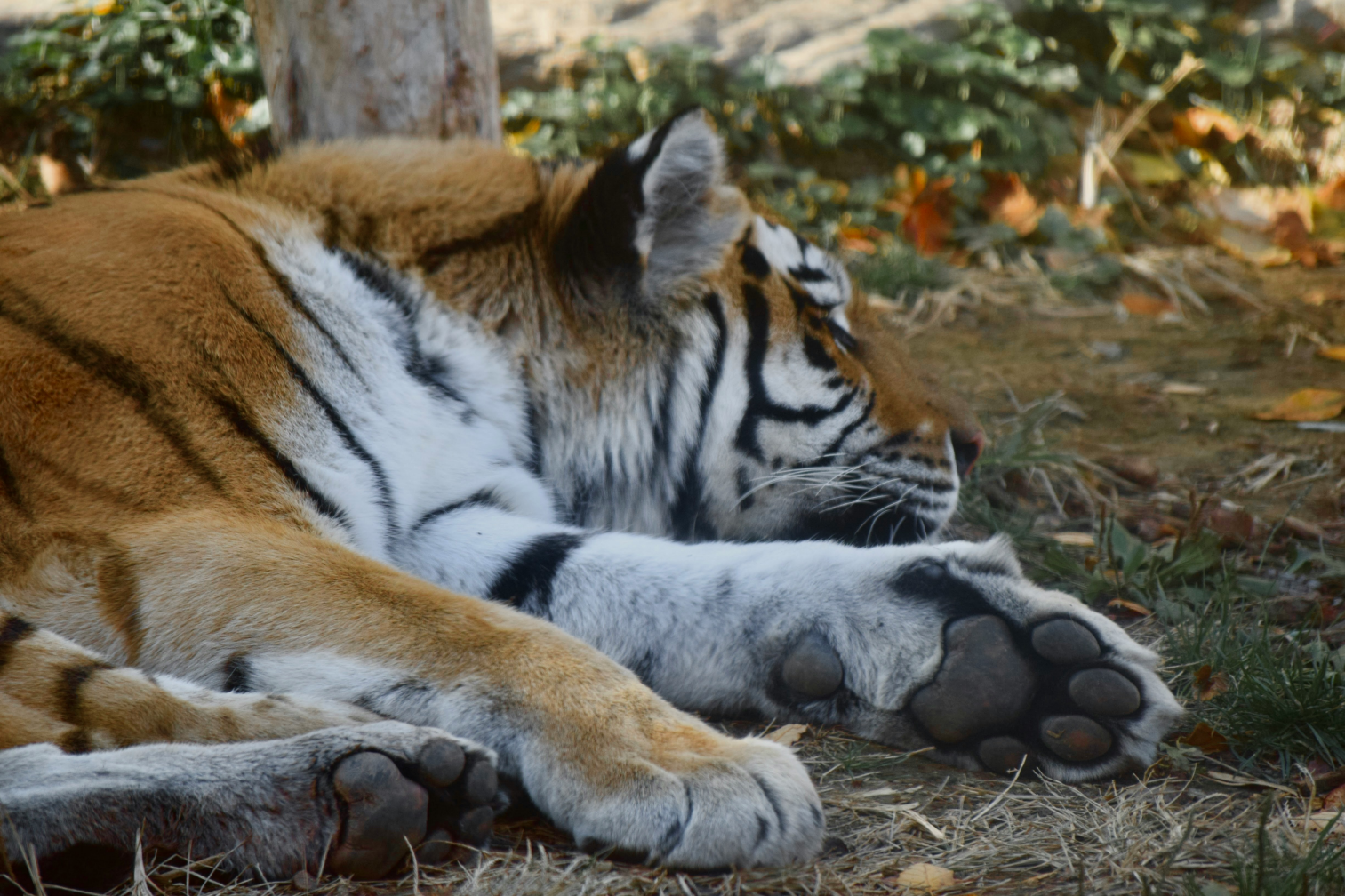
Tiger: The Striped Majesty of the Wild
The tiger, one of the most iconic predators on Earth, captures the imagination of zoo visitors with its raw power and unmatched beauty. These big cats are the largest of the feline family, and their striking orange coats with black stripes make them easily recognizable.
Habitats in Zoos: Tigers in captivity are provided with large, enriched enclosures that mimic their natural environment. This includes shaded areas, pools for swimming, and grassy spaces for resting. Tigers are natural swimmers, and watching them take a dip is a highlight for many visitors.
Diet and Nutrition: In zoos, tigers are fed a diet of fresh meat, often designed to replicate the hunting challenges they face in the wild. Some zoos even use enrichment feeding, such as hanging meat or hiding it within the enclosure, to encourage the tiger's natural hunting instincts.
Behavioral Traits: Despite their solitary nature, tigers in zoos are often seen engaging in playful activities, especially younger ones. Their powerful roars can be heard across long distances, a thrilling experience for anyone nearby.
Conservation Role: Tigers are endangered due to habitat destruction and poaching. Zoos play a vital role in tiger conservation through breeding programs and partnerships with wildlife organizations. Educational initiatives in zoos teach visitors about the critical need to protect these majestic animals and their ecosystems.
The presence of tigers in zoos not only provides an opportunity to admire their magnificence up close but also serves as a reminder of the urgent need to protect them in the wild.